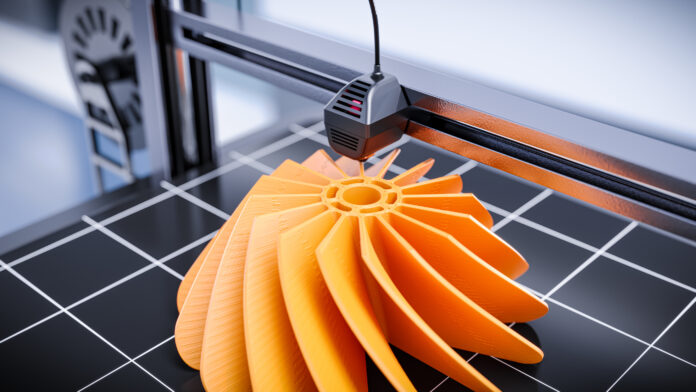
In recent years, 3D and 4D printing technologies have moved from the realm of science fiction to practical applications across various industries. These technologies are not only revolutionizing how products are designed and manufactured but are also reshaping business operations, distribution models, and supply chains. As companies explore the potential of these innovative technologies, the impact on business processes is becoming increasingly significant.
The Rise of 3D Printing in Business
Revolutionizing Manufacturing Processes
3D printing, also known as additive manufacturing, allows companies to create complex and customized products with a high degree of precision and minimal waste. Unlike traditional manufacturing methods, which often require expensive molds or tools, 3D printing builds objects layer by layer from digital designs. This method reduces material waste, lowers production costs, and enables rapid prototyping, allowing businesses to bring products to market faster.
For example, companies like GE Additive have integrated 3D printing into their manufacturing processes, producing everything from jet engine components to medical devices. This technology is particularly valuable in industries where customization is key, such as healthcare and aerospace, where bespoke solutions can be produced efficiently and affordably.
Streamlining Supply Chains
3D printing has the potential to significantly streamline supply chains by enabling localized production. Instead of relying on complex, global supply chains that are vulnerable to disruptions, companies can produce parts and products on-demand, closer to the point of use. This reduces lead times, lowers transportation costs, and minimizes the risk of supply chain interruptions.
For instance, automotive companies like Ford are using 3D printing to produce parts and tools directly at their manufacturing plants, reducing the need for large inventories and allowing for greater flexibility in production.
Enhancing Product Customization
One of the most compelling advantages of 3D printing is its ability to create highly customized products at scale. Whether it’s custom-fit dental implants, personalized footwear, or unique automotive parts, 3D printing allows businesses to meet individual customer needs without significant cost increases. This capability is particularly valuable in industries like healthcare, where personalized treatments and devices are increasingly in demand.
For example, Nike has been leveraging 3D printing to create custom footwear for athletes, enhancing performance by tailoring shoes to the exact specifications of the wearer’s foot.
The Advent of 4D Printing
What is 4D Printing?
While 3D printing has already had a transformative impact, 4D printing is the next frontier. 4D printing involves creating objects that can change shape or properties over time in response to environmental conditions such as heat, light, or moisture. These “smart” materials are embedded with the ability to adapt to their surroundings, offering new possibilities for innovation in manufacturing and beyond.
Applications in Manufacturing and Beyond
4D printing has the potential to revolutionize industries where adaptability and responsiveness are critical. For example, in the construction industry, 4D-printed materials could be used to create self-assembling structures or materials that adapt to weather conditions, improving durability and reducing maintenance costs. In the medical field, 4D printing could lead to the development of implants that change shape or function once inside the body, offering more effective treatments.
A real-world example of this technology in action is MIT’s Self-Assembly Lab, which has been at the forefront of 4D printing research, exploring applications ranging from adaptive building materials to responsive textiles.
Impact on Distribution and Logistics
Decentralizing Production
Both 3D and 4D printing enable decentralized production models, where goods can be manufactured closer to the consumer or even on-site. This shift reduces the need for large, centralized manufacturing facilities and enables companies to respond more quickly to market demands. It also opens up new possibilities for on-demand production, where products are made only when needed, reducing excess inventory and waste.
Reducing Environmental Impact
The ability to produce goods locally and on-demand also has significant environmental benefits. By reducing the need for transportation and minimizing waste, 3D and 4D printing can help businesses lower their carbon footprint. Additionally, the use of sustainable materials in additive manufacturing processes further enhances the environmental advantages of these technologies.
Changing the Role of Distributors
As production becomes more localized, the traditional role of distributors is likely to evolve. Instead of transporting finished goods, distributors may increasingly focus on delivering raw materials or digital designs that can be printed on-site. This shift could lead to new business models and opportunities for companies in the distribution and logistics sectors.
The Future of 3D and 4D Printing in Business
3D and 4D printing technologies are poised to have a profound impact on how businesses operate, manufacture, and distribute products. From revolutionizing manufacturing processes to enabling highly customized products and decentralized production models, these technologies are transforming industries and creating new opportunities for innovation. As companies continue to explore the possibilities of 3D and 4D printing, those that embrace these technologies will be better positioned to thrive in an increasingly competitive and rapidly changing business landscape.
For more insights into how these technologies are shaping the future of business, you can explore additional resources on additive manufacturing, supply chain transformation, and emerging innovations.




